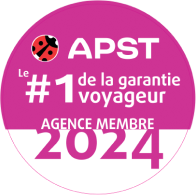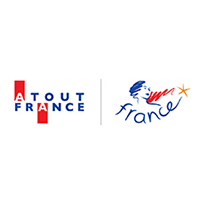Thailand
Covering approximately 7 hectares, the grounds of the palace feature a vast lawn dotted with 12 treasure halls, 10 elephant stables, an audience hall, royal residences, and picturesque water points. Still visible today, the red brick walls are remnants weathered by time and Lopburi's climate.
A witness to history, a relic of Lopburi's past
This royal residence of King Ramathibodi III (Narai the Great) is located in central Thailand, in Lopburi. The monarch commissioned its construction after designating Monkey City as the second capital of his kingdom, where he spent over 8 months annually. The king only left the property during heavy rainy seasons.
The great Ayutthayan monarch initiated construction of the palace in 1965, nine years into his reign. This ancient structure is a testament to the synergistic meeting of two different cultures, predominantly featuring French and Khmer architecture. Notably, King Narai the Great's pride was the water supply system of the castle, established by French and Italian technicians as detailed in historical archives.
Beyond being a private residence for royalty, the palace was a pivotal site for Siam's diplomacy. King Narai hosted dignitaries from neighboring countries and kingdoms, including ambassadors, politicians, and aristocrats.
Initially, the property consisted only of the royal pavilion of Suttha Sawan. Fatefully, it was here that the monarch drew his last breath in 1688.
Today, an unmissable museum in Monkey City
King Mongkut, Siam's first successor to the throne, renovated the palace and renamed it Phra Narai Ratchaniwet. In 1856, he began construction of a new royal pavilion, Phiman Mongkut. He also founded the village of Phra Prathiang II to accommodate the palace's permanent staff.
The building served as Lopburi's town hall during the reign of Rama V. In 1924, the Chantara Phisan Pavilion was transformed into a museum at the behest of two Siamese princes. Renamed the National Museum Somdet Phra Narai in 1961, it preserves and exhibits thousands of artifacts from the former palace.
Exploring King Ramathibodi III's Palace
The main gate and castle walls, painted white, are architectural marvels that not only guide visitors but also serve as visual landmarks across the entire structure.
Dusit Sawan Thanya Maha Prasat
A must-see, this audience hall blends French and Thai styles, adorned with crystal and mirrors. Here, you can find a statue of Narai the Great and French ambassador Chevalier de Chaumont.
Phiman Mongkut
The three-story residence of King Rama IV during his stay in Lopburi is a marvel of Chinese architecture. The monarch resided in the topmost room, which now showcases royal attire and accessories used by Siam's sovereigns.
The lower two levels house exhibitions on art, culture, and religion from the Chao Phraya River era. Visitors can explore paintings, pottery, prehistoric remains, Buddha images, and various ancient utensils and objects.
Chanthara Phisan
Once a meeting place for high dignitaries of King Ramathibodi III, this building houses invaluable religious and royal documents, recounting the history of the great Ayutthayan monarch within its four walls.
Phra Prathiap
Built at the request of King Rama IV to house court members, these ten royal constructions honor Monkey City and its culture, exhibiting art and religious objects dating back to the city's origins.
Nang Yai Museum
Dedicated to shadow puppet theater, this building preserves myths and legends from the Ramakien through creative screen performances, ensuring they are not forgotten.
Practical information
Address
Sorasak Road, Muang District, Lopburi 15000.
Opening hours and admission
The site opens from 8:30 a.m. to 4 p.m. The Palace welcomes visitors from Wednesday to Sunday and is closed on public holidays. Admission costs 150 baht.
How to reach the site
Nestled in central Lopburi, this castle-museum is accessible from Pratu Phayakkha Municipal Park. It borders a river of the same name in the city and is adjacent to Wat Phra Sri Rattana Mahathat. Cyclos and tuk-tuks shuttle from the city's railway station.

